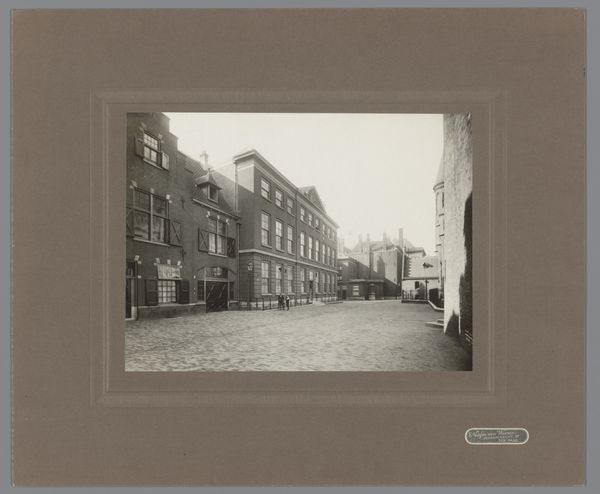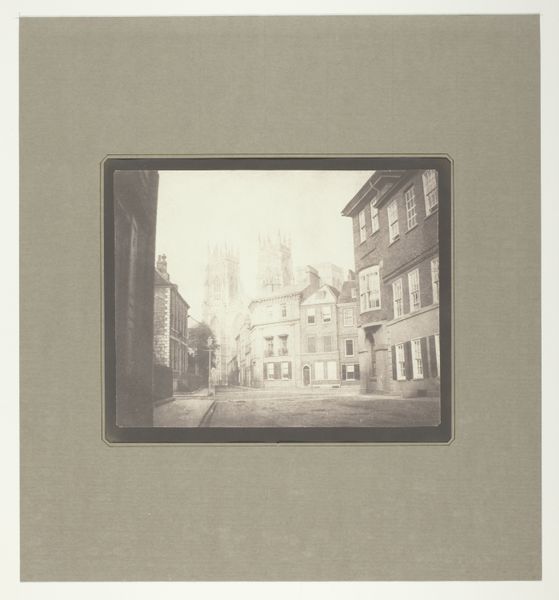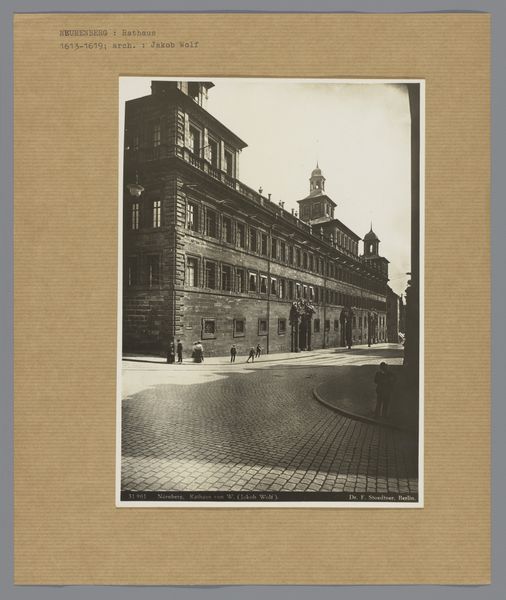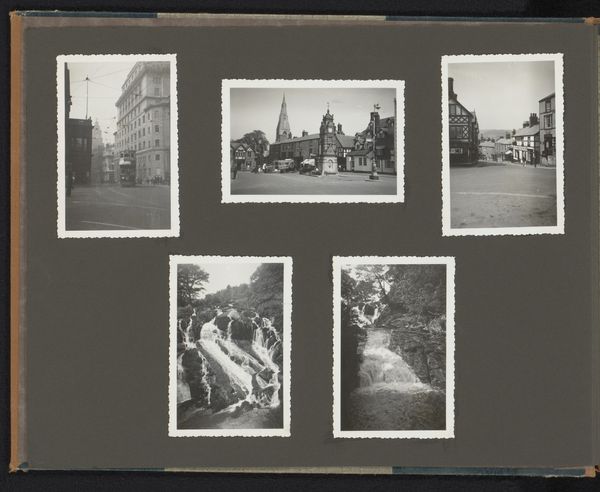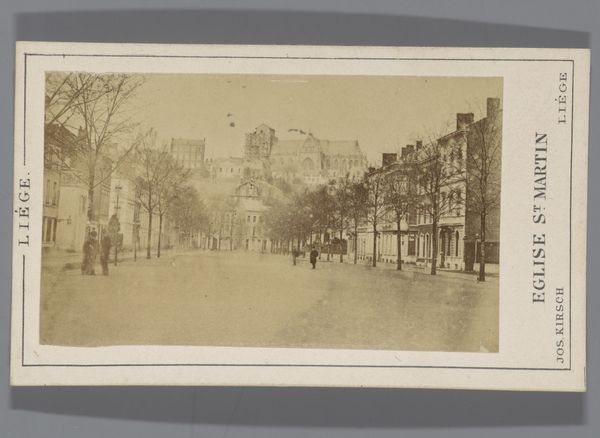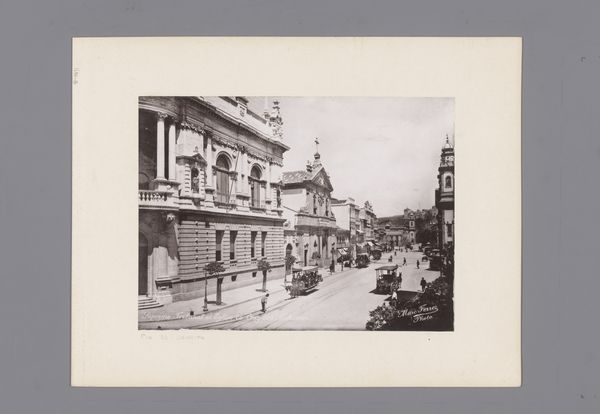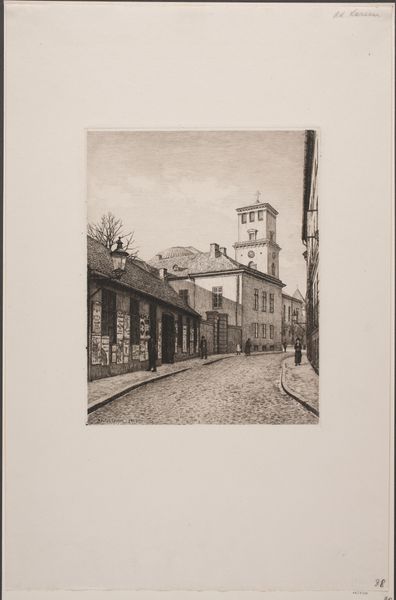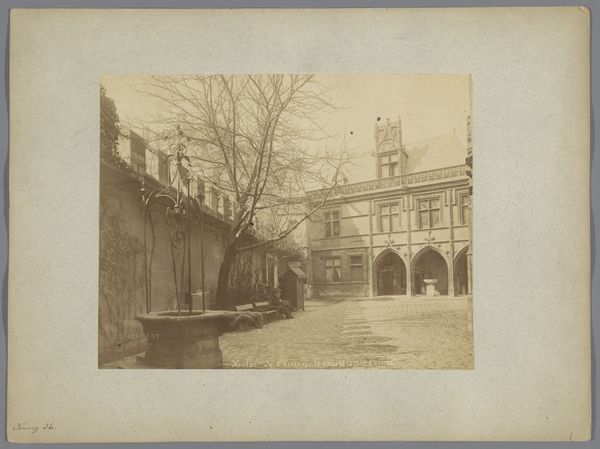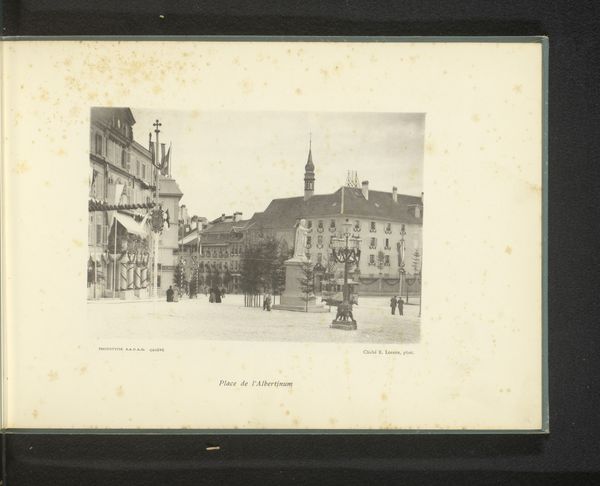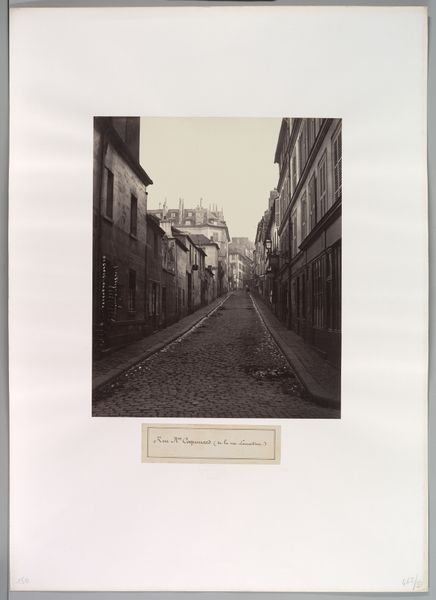
Gezicht op het buitenhof met het standbeeld van koning Willem II 1900 - 1921
0:00
0:00
photography, albumen-print
#
street-photography
#
photography
#
cityscape
#
modernism
#
albumen-print
Dimensions: height 300 mm, width 360 mm
Copyright: Rijks Museum: Open Domain
Editor: Here we have "Gezicht op het buitenhof met het standbeeld van koning Willem II" – roughly, "View of the Outer Court with the Statue of King William II" – by E. Visser von Weeren, created sometime between 1900 and 1921, and preserved as an albumen print. It's a very still scene. I’m curious how this cityscape interacts with Modernism, as the description suggests. What do you see in this piece? Curator: I see a study in materials and their relation to power and commerce. Look at the precise photographic process, the specific choice of albumen print, a process requiring skill and infrastructure to produce. And the physical scene – the cobblestone streets and the iron rails bisecting them speak to material trade, industry, movement. How were these stones and rails obtained, transported, laid? By whose labor? Editor: So, you're seeing beyond the static image and thinking about the actual work involved in creating the scene and the photograph itself? Curator: Precisely! Even the statue of King William. Consider the bronze it is made from – a material signifying status and imperial reach. The photograph freezes a moment, but the material conditions extend far beyond it. The very consumption of such an image speaks to emerging capitalist values. Editor: That’s a compelling angle. I hadn't thought about it in terms of the social implications of material production and consumption. Curator: Ask yourself, who was commissioning and consuming photographs like these, and why? It allows a deeper insight into early 20th-century society and class. Editor: This gives me a lot to think about – the interplay of materials, labor, and how they reflect power structures. It reframes the entire image for me. Curator: Indeed. By looking at materiality, we can deconstruct what photographs like this communicated, not just to its contemporary audience, but also to us, viewing it today.
Comments
No comments
Be the first to comment and join the conversation on the ultimate creative platform.
